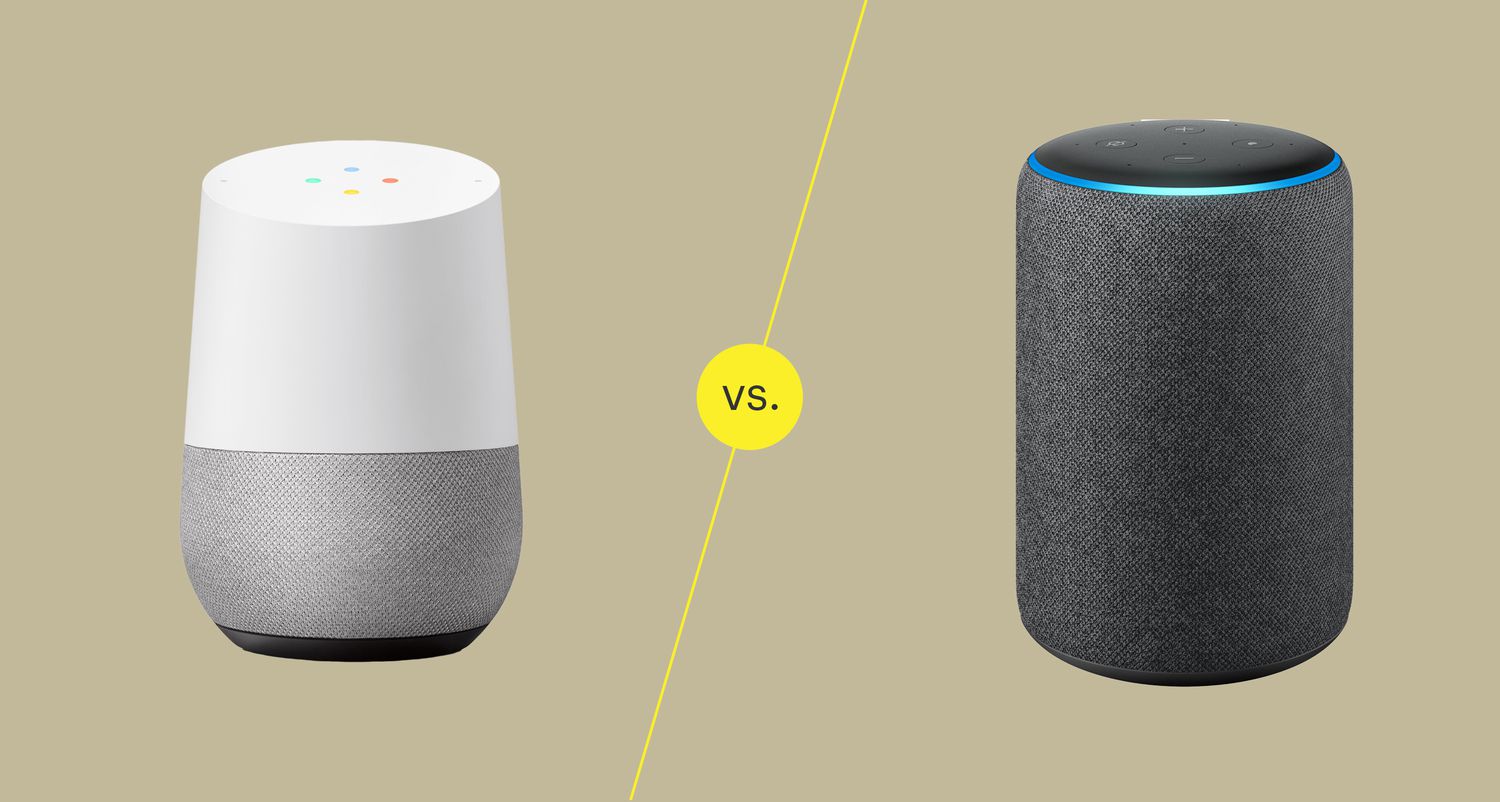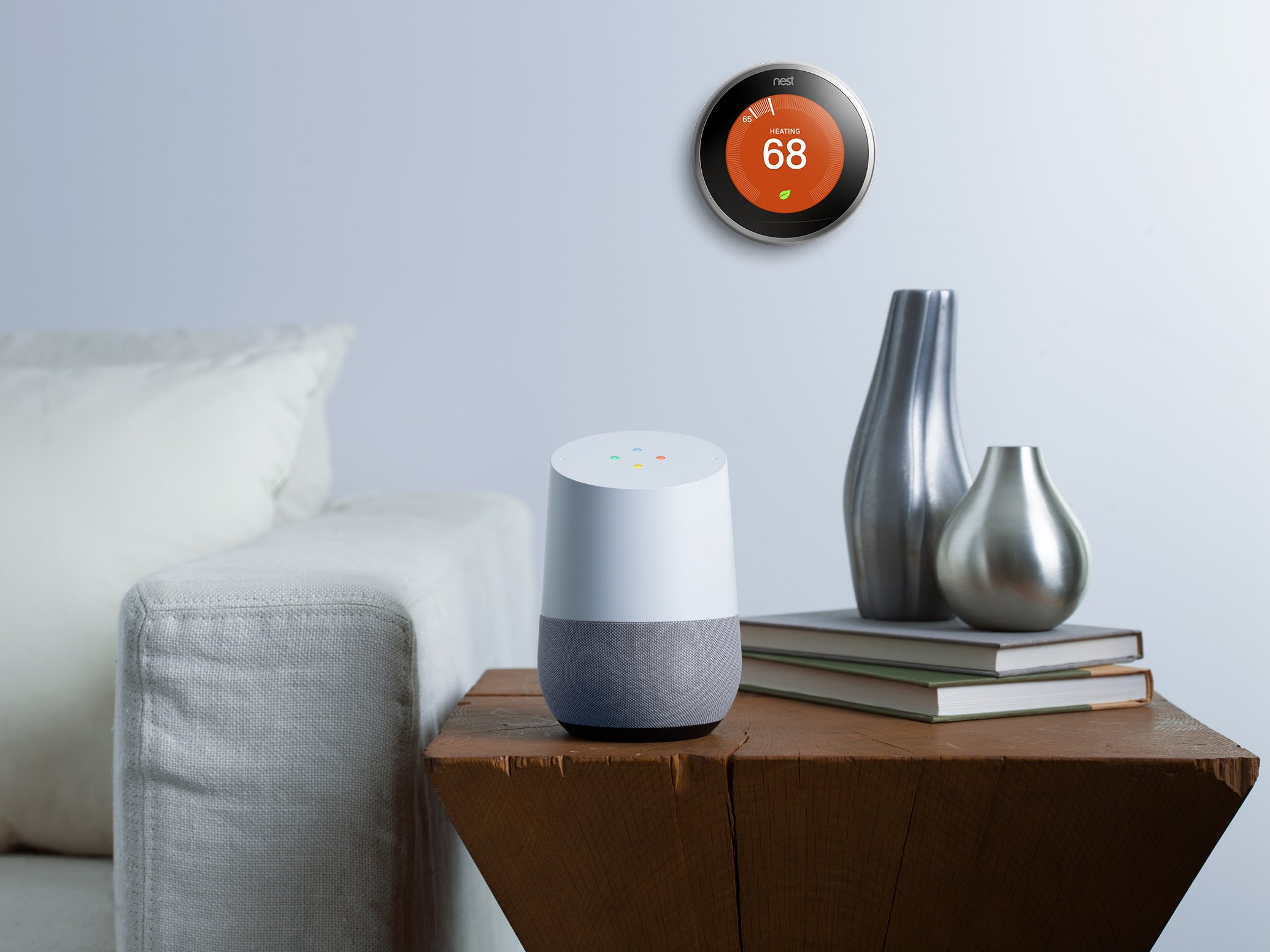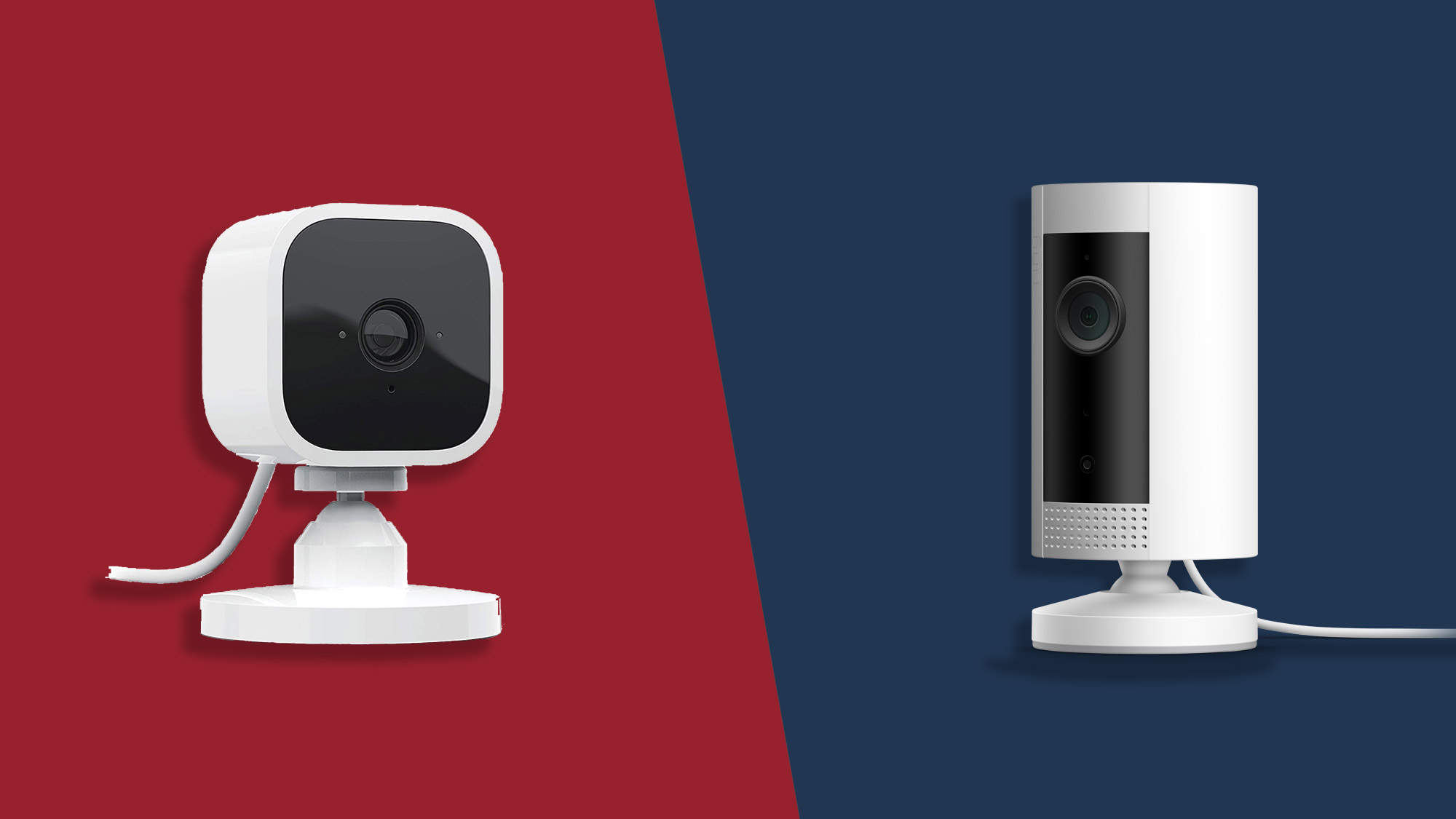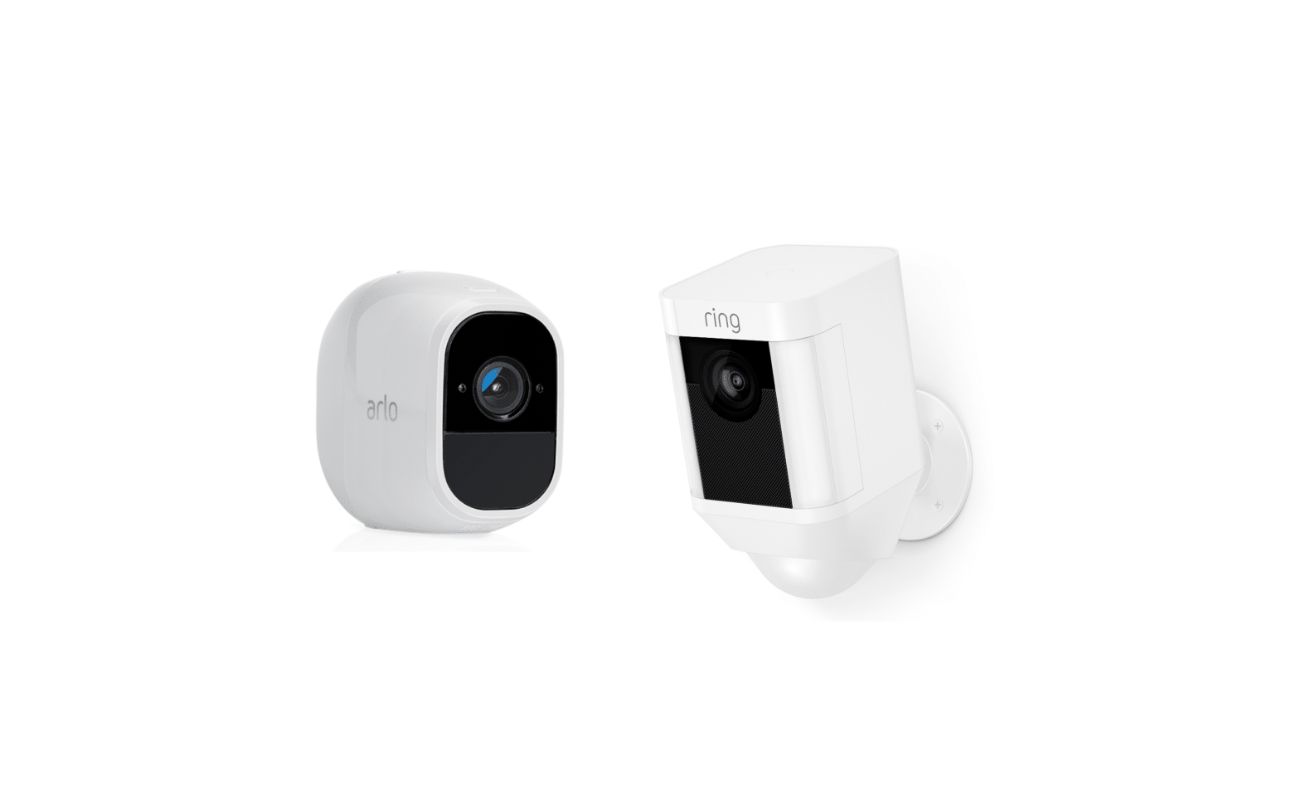Home>Home Appliances>Home Automation Appliances>Alexa Or Google Home: Which Is Better


Home Automation Appliances
Alexa Or Google Home: Which Is Better
Modified: October 21, 2024
Discover the best home automation appliances with our comparison of Alexa and Google Home. Find out which smart assistant is better for your needs. Explore now!
(Many of the links in this article redirect to a specific reviewed product. Your purchase of these products through affiliate links helps to generate commission for Storables.com, at no extra cost. Learn more)
Introduction
In the fast-evolving landscape of home automation, the integration of smart devices has become increasingly prevalent, revolutionizing the way we interact with our living spaces. At the forefront of this technological shift are voice-activated virtual assistants, which have emerged as indispensable tools for controlling and managing a wide array of smart home appliances and systems. Among the most prominent contenders in this domain are Amazon's Alexa and Google Home.
As the demand for hands-free, voice-activated assistance continues to soar, the competition between these two industry giants has intensified, prompting consumers to ponder a crucial question: which of these platforms is superior? To unravel this query, we will embark on a comprehensive exploration of the key features and functionalities of both Alexa and Google Home. By delving into their design and build, voice recognition and response capabilities, smart home integration, entertainment and media prowess, skills and apps, privacy and security measures, as well as pricing and availability, we aim to provide a holistic perspective on the strengths and limitations of each platform.
Through this exploration, readers will gain valuable insights into the distinctive attributes of Alexa and Google Home, enabling them to make informed decisions based on their specific preferences and requirements. Join us as we navigate through the intricacies of these cutting-edge technologies, shedding light on the nuances that differentiate these virtual assistants and ultimately determining which one reigns supreme in the realm of home automation.
Key Takeaways:
- Alexa and Google Home are both great options for controlling smart home devices, playing music, and accessing information. They have sleek designs, understand voice commands well, and offer a wide range of compatible devices and apps.
- Both Alexa and Google Home prioritize user privacy and security, allowing users to control their data and offering robust measures to protect sensitive information. They are also available at competitive prices and widely accessible globally.
Read more: Which Is Better: Google Home Vs. Amazon Echo
Design and Build
When it comes to the design and build of smart home devices, both Amazon’s Alexa and Google Home boast sleek and modern aesthetics that seamlessly blend into various living spaces. Alexa devices, such as the Echo Dot and Echo Show, feature a cylindrical or spherical form factor with fabric or plastic exteriors, exuding a contemporary and unobtrusive charm. On the other hand, Google Home devices, including the Nest Mini and Nest Hub, exhibit a minimalist design characterized by soft edges and fabric coverings, projecting an understated elegance.
While Alexa devices are available in a wider range of sizes and shapes, Google Home devices are renowned for their seamless integration with other Google products and services, reflecting a cohesive and unified ecosystem. Additionally, the LED light indicators on both Alexa and Google Home devices serve as intuitive visual cues, providing users with valuable feedback and status notifications.
From a build quality standpoint, both Alexa and Google Home devices are durably constructed, ensuring longevity and reliability. The tactile buttons and tactile mute switches on these devices contribute to their user-friendly interface, allowing for effortless manual control when needed. Moreover, the compact dimensions and lightweight nature of these devices enhance their portability, enabling users to effortlessly relocate them within their homes.
Overall, the design and build of Alexa and Google Home devices are characterized by a harmonious blend of form and functionality, catering to diverse aesthetic preferences and spatial requirements. Whether it’s the seamless integration of Google Home devices within the Google ecosystem or the versatile design options offered by Alexa devices, both platforms excel in delivering visually appealing and well-crafted smart home solutions.
Voice Recognition and Response
One of the pivotal aspects of a virtual assistant is its ability to accurately recognize and swiftly respond to voice commands. Amazon’s Alexa and Google Home have made substantial strides in refining their voice recognition and response capabilities, setting the stage for seamless and intuitive interactions.
Amazon’s Alexa leverages an advanced far-field voice recognition technology, enabling it to discern commands from a considerable distance and amidst ambient noise. This empowers users to effortlessly communicate with Alexa without being in close proximity to the device, fostering a sense of freedom and convenience. Furthermore, Alexa’s natural language processing capabilities allow for nuanced and contextually relevant responses, enhancing the overall user experience.
On the other hand, Google Home harnesses the formidable prowess of Google’s cutting-edge speech recognition algorithms, facilitating precise and contextually astute voice recognition. The ability to discern individual voices within a household and customize responses based on user profiles sets Google Home apart, tailoring interactions to the specific preferences and requirements of different users. This personalized approach contributes to a more tailored and user-centric experience, elevating the overall utility of Google Home devices.
Both Alexa and Google Home exhibit remarkable responsiveness, swiftly executing commands and inquiries with minimal latency. Whether it’s controlling smart home devices, fetching real-time information, or performing complex tasks, these virtual assistants exhibit a high degree of agility and proficiency. The seamless integration with third-party services and applications further amplifies their utility, expanding the scope of voice-activated interactions and enhancing the overall user experience.
Ultimately, the voice recognition and response capabilities of Amazon’s Alexa and Google Home exemplify the pinnacle of innovation in the realm of virtual assistants, underscoring their capacity to comprehend and cater to the diverse needs of users with remarkable precision and efficiency.
Smart Home Integration
The seamless integration of virtual assistants with a diverse array of smart home devices and systems is a pivotal consideration for consumers seeking to streamline and optimize their living spaces. Both Amazon’s Alexa and Google Home have established themselves as formidable contenders in this domain, offering robust compatibility and expansive integration capabilities.
Amazon’s Alexa boasts an extensive repertoire of compatible smart home devices, ranging from smart lighting and thermostats to security cameras and kitchen appliances. This broad ecosystem of supported devices, coupled with Alexa’s intuitive and user-friendly interface, empowers users to effortlessly manage and control their smart home infrastructure with simple voice commands. The flexibility and versatility of Alexa’s smart home integration enable users to curate custom routines and automate tasks, fostering a tailored and efficient living environment.
Conversely, Google Home’s seamless integration with a myriad of smart home devices, underpinned by the Works with Google Assistant program, positions it as a formidable ally in the realm of home automation. The ability to orchestrate interconnected smart devices through Google Home’s intuitive interface, coupled with its interoperability with a wide spectrum of third-party products and services, amplifies its utility and appeal. Additionally, Google Home’s compatibility with Google’s ecosystem of services and products further enhances its capacity to harmonize and optimize smart home environments.
Both Alexa and Google Home offer comprehensive support for popular smart home protocols such as Zigbee and Z-Wave, enabling users to seamlessly connect and control a diverse range of devices within a unified ecosystem. This interoperability, coupled with the capacity to create custom routines and automate tasks, empowers users to orchestrate their smart home infrastructure with unparalleled convenience and efficiency.
In essence, the smart home integration capabilities of Amazon’s Alexa and Google Home epitomize the convergence of cutting-edge technology and user-centric design, delivering an immersive and streamlined home automation experience that caters to the diverse needs and preferences of modern homeowners.
Entertainment and Media
Amidst the multifaceted functionalities of virtual assistants, their role as entertainment and media hubs holds significant appeal for consumers seeking seamless access to a myriad of content. Amazon’s Alexa and Google Home have positioned themselves as versatile conduits for entertainment and media consumption, offering a rich tapestry of features and integrations that cater to diverse preferences.
Amazon’s Alexa serves as a gateway to a vast spectrum of entertainment options, allowing users to effortlessly stream music, audiobooks, and podcasts from popular platforms such as Amazon Music, Spotify, and Audible. The integration of multi-room audio capabilities enables users to synchronize music playback across multiple Alexa-enabled devices, fostering a captivating and immersive audio experience throughout their homes. Furthermore, Alexa’s compatibility with a myriad of streaming services and radio stations empowers users to curate personalized entertainment experiences tailored to their musical inclinations and preferences.
Google Home, with its robust integration with Google’s ecosystem, offers a compelling array of entertainment and media features. Users can leverage Google Home to access and stream music from popular services like YouTube Music, Spotify, and Pandora, immersing themselves in a diverse repertoire of musical genres and artists. Additionally, Google Home’s seamless integration with Chromecast facilitates effortless control over media playback on compatible devices, enabling users to cast their favorite shows, movies, and videos onto their television screens with unparalleled ease.
Both Alexa and Google Home serve as adept conduits for accessing real-time information, news updates, and weather forecasts, enriching users’ daily routines with valuable insights and current affairs. The capacity to set personalized news briefings and customize content preferences underscores the user-centric approach adopted by these virtual assistants, tailoring the dissemination of information to align with individual interests and inclinations.
Ultimately, the entertainment and media capabilities of Amazon’s Alexa and Google Home epitomize their multifaceted utility, positioning them as indispensable companions that enrich users’ lives with a diverse array of content and entertainment options.
When choosing between Alexa and Google Home, consider the ecosystem you are already invested in. If you use a lot of Google services, Google Home may be a better fit. If you are an Amazon Prime member and use Amazon services, Alexa may be the better choice.
Skills and Apps
The versatility and extensibility of virtual assistants are significantly enhanced by their capacity to integrate a diverse array of skills and apps, enriching their functionality and catering to a broad spectrum of user needs. Both Amazon’s Alexa and Google Home have cultivated expansive ecosystems of skills and apps, empowering users to personalize and augment their virtual assistant experiences in accordance with their specific requirements.
Amazon’s Alexa boasts a robust library of over 100,000 skills, encompassing a wide array of functionalities ranging from productivity tools and smart home management to entertainment and wellness applications. This vast repository of skills, developed by third-party developers and brands, amplifies the utility and appeal of Alexa, enabling users to seamlessly extend its capabilities to align with their diverse needs and preferences. Whether it’s ordering food, accessing fitness routines, or controlling smart home devices, Alexa’s skills ecosystem offers a myriad of options for users to tailor their experiences.
Google Home, leveraging the power of Google Assistant, offers a rich assortment of compatible apps and services, empowering users to streamline tasks, access information, and engage with a diverse range of functionalities. The integration of Google Actions, which are akin to Alexa skills, further expands Google Home’s utility, allowing users to personalize their interactions and access a broad spectrum of services and content. From ordering groceries and managing schedules to accessing news updates and exploring educational resources, Google Home’s repertoire of apps and services caters to a diverse array of user needs.
Both Alexa and Google Home offer seamless integration with popular productivity tools, allowing users to streamline their workflows and access essential information with ease. The capacity to create custom routines and automate tasks using a myriad of third-party apps and services enhances the overall efficiency and convenience of these virtual assistants, fostering a tailored and personalized user experience.
In essence, the expansive ecosystems of skills and apps associated with Amazon’s Alexa and Google Home epitomize their adaptability and versatility, empowering users to craft tailored and enriching virtual assistant experiences that align with their unique requirements and preferences.
Privacy and Security
Privacy and security are paramount considerations in the realm of virtual assistants, as users entrust these platforms with a myriad of personal and sensitive information. Both Amazon’s Alexa and Google Home have implemented robust measures to safeguard user data and ensure the integrity of their privacy, reflecting a steadfast commitment to maintaining the trust and confidence of their user base.
Amazon’s Alexa prioritizes user privacy through features such as the ability to review and delete voice recordings, providing users with transparent control over their data. Additionally, the incorporation of multi-layered authentication mechanisms and encryption protocols fortifies the security of user interactions and data transmissions, mitigating the risk of unauthorized access and breaches. Alexa’s stringent privacy policies and proactive approach to addressing security vulnerabilities underscore its dedication to upholding the confidentiality and integrity of user information.
Google Home, underpinned by Google’s robust security infrastructure, implements stringent privacy controls and encryption protocols to safeguard user data against unauthorized access and breaches. The provision of granular privacy settings empowers users to customize their data sharing preferences and exercise control over the information collected by Google Home, fostering a sense of agency and transparency. Furthermore, Google’s commitment to proactive security measures and regular updates bolsters the resilience of Google Home’s security framework, assuring users of a robust and reliable safeguarding of their personal information.
Both Amazon’s Alexa and Google Home adhere to stringent data retention policies, ensuring that user data is handled in a responsible and ethical manner. The implementation of regular security audits and adherence to industry best practices further reinforces the reliability and trustworthiness of these platforms, instilling confidence in users regarding the protection of their privacy and sensitive information.
In summation, the unwavering focus on privacy and security exhibited by Amazon’s Alexa and Google Home underscores their commitment to fostering a safe, trustworthy, and privacy-respecting environment for users, consolidating their positions as responsible custodians of user data in the realm of virtual assistants.
Pricing and Availability
When considering the adoption of a virtual assistant, factors such as pricing and availability play a pivotal role in shaping consumers’ decisions. Amazon’s Alexa and Google Home are available in a diverse range of devices, each catering to distinct user preferences and requirements, while offering competitive pricing models that align with their respective feature sets and capabilities.
Amazon’s Alexa is accessible through a myriad of Echo devices, including the Echo Dot, Echo Show, and Echo Plus, among others, each tailored to specific use cases and spatial requirements. This diverse array of options ensures that users can select a device that seamlessly integrates into their living spaces while aligning with their budgetary considerations. The pricing of Alexa-enabled devices is positioned competitively, offering an accessible entry point for users seeking to venture into the realm of voice-activated virtual assistants.
Google Home, encompassing devices such as the Nest Mini, Nest Hub, and Nest Audio, presents users with a spectrum of options characterized by sleek design and robust functionality. The pricing of Google Home devices reflects a balance between their feature sets and the value they offer, catering to users with varying needs and preferences. The availability of Google Home devices across diverse retail channels and online platforms ensures widespread accessibility for consumers seeking to embrace the convenience of a virtual assistant.
Both Amazon’s Alexa and Google Home are available in various regions, ensuring global accessibility and catering to the diverse needs of users across different geographies. This widespread availability underscores the commitment of both platforms to democratizing access to voice-activated virtual assistants, fostering inclusivity and ensuring that users worldwide can benefit from the capabilities offered by these innovative technologies.
In essence, the pricing and availability of Amazon’s Alexa and Google Home devices reflect a commitment to accessibility, choice, and value, empowering users to select a virtual assistant solution that aligns with their unique requirements and budgetary considerations, while ensuring widespread availability across diverse regions.
Conclusion
In the dynamic landscape of home automation and virtual assistants, the rivalry between Amazon’s Alexa and Google Home has engendered a compelling array of options for consumers seeking to integrate cutting-edge technologies into their living spaces. As we traverse the intricacies of these platforms, it becomes evident that both Alexa and Google Home exhibit formidable strengths and capabilities, catering to diverse user preferences and requirements with finesse.
The design and build of Amazon’s Alexa and Google Home devices reflect a harmonious blend of aesthetics and functionality, catering to varied spatial requirements and design sensibilities. The sleek and modern exteriors, coupled with intuitive interfaces and tactile controls, underscore the commitment of both platforms to delivering visually appealing and user-centric smart home solutions.
When it comes to voice recognition and response, Amazon’s Alexa and Google Home demonstrate a remarkable capacity to comprehend and execute commands with precision and agility. The far-field voice recognition technology and personalized voice profiles offered by these platforms exemplify their commitment to delivering seamless and intuitive interactions, enhancing the overall user experience.
Smart home integration stands as a cornerstone of the appeal of both Alexa and Google Home, with robust compatibility with a diverse array of smart devices and protocols, empowering users to orchestrate and optimize their living spaces with unparalleled convenience and efficiency.
Entertainment and media capabilities further enrich the utility of Amazon’s Alexa and Google Home, offering a rich tapestry of options for accessing music, news, and real-time information, fostering engaging and immersive experiences for users.
The expansive ecosystems of skills and apps associated with Alexa and Google Home underscore their adaptability and versatility, enabling users to personalize and augment their virtual assistant experiences in accordance with their specific requirements and preferences.
Privacy and security measures implemented by both platforms reflect a steadfast commitment to safeguarding user data and ensuring the confidentiality and integrity of interactions, fostering a safe and trustworthy environment for users to engage with these virtual assistants.
Finally, the competitive pricing and widespread availability of Amazon’s Alexa and Google Home devices underscore their commitment to accessibility, choice, and value, ensuring that users worldwide can benefit from the capabilities offered by these innovative technologies.
In conclusion, the realm of home automation and virtual assistants is enriched by the formidable capabilities and user-centric design of Amazon’s Alexa and Google Home, offering consumers a diverse array of options to seamlessly integrate cutting-edge technologies into their living spaces, shaping a future where convenience, efficiency, and innovation converge to redefine the concept of a connected home.
Frequently Asked Questions about Alexa Or Google Home: Which Is Better
Was this page helpful?
At Storables.com, we guarantee accurate and reliable information. Our content, validated by Expert Board Contributors, is crafted following stringent Editorial Policies. We're committed to providing you with well-researched, expert-backed insights for all your informational needs.















0 thoughts on “Alexa Or Google Home: Which Is Better”